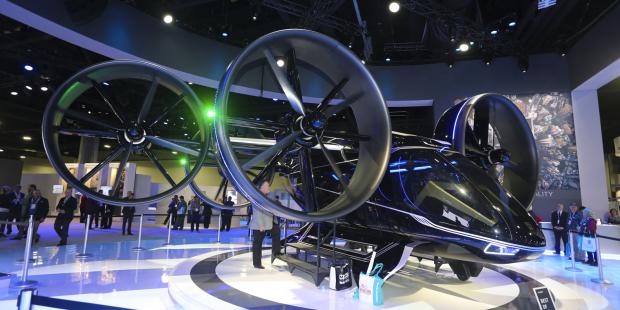
Breaking News
 Why Are We Defending Mass Murder in Gaza? Because Our Greatest Ally Demands It
Why Are We Defending Mass Murder in Gaza? Because Our Greatest Ally Demands It
 The Silver Price Signal Everyone Is Missing | Mike Maloney & Alan Hibbard
The Silver Price Signal Everyone Is Missing | Mike Maloney & Alan Hibbard
 House Democrat introduces impeachment articles against RFK Jr
House Democrat introduces impeachment articles against RFK Jr
Top Tech News
 Build a Greenhouse HEATER that Lasts 10-15 DAYS!
Build a Greenhouse HEATER that Lasts 10-15 DAYS!
 Look at the genius idea he came up with using this tank that nobody wanted
Look at the genius idea he came up with using this tank that nobody wanted
 Latest Comet 3I Atlas Anomolies Like the Impossible 600,000 Mile Long Sunward Tail
Latest Comet 3I Atlas Anomolies Like the Impossible 600,000 Mile Long Sunward Tail
 Tesla Just Opened Its Biggest Supercharger Station Ever--And It's Powered By Solar And Batteries
Tesla Just Opened Its Biggest Supercharger Station Ever--And It's Powered By Solar And Batteries
 Your body already knows how to regrow limbs. We just haven't figured out how to turn it on yet.
Your body already knows how to regrow limbs. We just haven't figured out how to turn it on yet.
 We've wiretapped the gut-brain hotline to decode signals driving disease
We've wiretapped the gut-brain hotline to decode signals driving disease
 3D-printable concrete alternative hardens in three days, not four weeks
3D-printable concrete alternative hardens in three days, not four weeks
 Could satellite-beaming planes and airships make SpaceX's Starlink obsolete?
Could satellite-beaming planes and airships make SpaceX's Starlink obsolete?
New battery technology to take electric VTOL vehicles off the ground

According to the Pennsylvania State University (Penn State) researchers, batteries for eVTOL vehicles have special requirements. Given these requirements, the scientists say the batteries will be built with these specific specifications in mind.
The Penn State researchers reported their findings alongside prototype eVTOL battery designs in a June 7 study published in Joule. They noted that eVTOL vehicles "have attracted considerable interest as a disruptive technology to transform future transportation systems." However, the researchers acknowledged that the batteries' unique operating profiles and requirements pose hurdles to be overcome by future battery technologies.
Study author Chao-Yang Wang said: "I think flying cars have the potential to eliminate a lot of time, increase productivity and open the sky corridors to transportation. Commercially, I would expect these vehicles to make 15 trips twice a day, during rush hour, to justify the cost of the vehicles. The first use will probably be from a city to an airport, carrying three to four people about 50 miles."
But Wang acknowledged that creating batteries to match the needs of eVTOL vehicles is not a walk in the park. "Batteries for flying cars need very high energy density so that [they] can stay in the air. [They] also need very high power during takeoff and landing. It requires a lot of power to go vertically up and down," he said.
The study author also noted that eVTOL vehicle batteries must have the ability to be recharged rapidly to match vehicles' frequent takeoffs and landings. A battery typically charges easily when empty, but charging takes longer and becomes more difficult as it stores more energy. Heating the battery, however, keeps the battery charging time short.

 1,872 Tractors STORM London
1,872 Tractors STORM London First totally synthetic human brain model has been realized
First totally synthetic human brain model has been realized Mach-23 potato gun to shoot satellites into space
Mach-23 potato gun to shoot satellites into space

